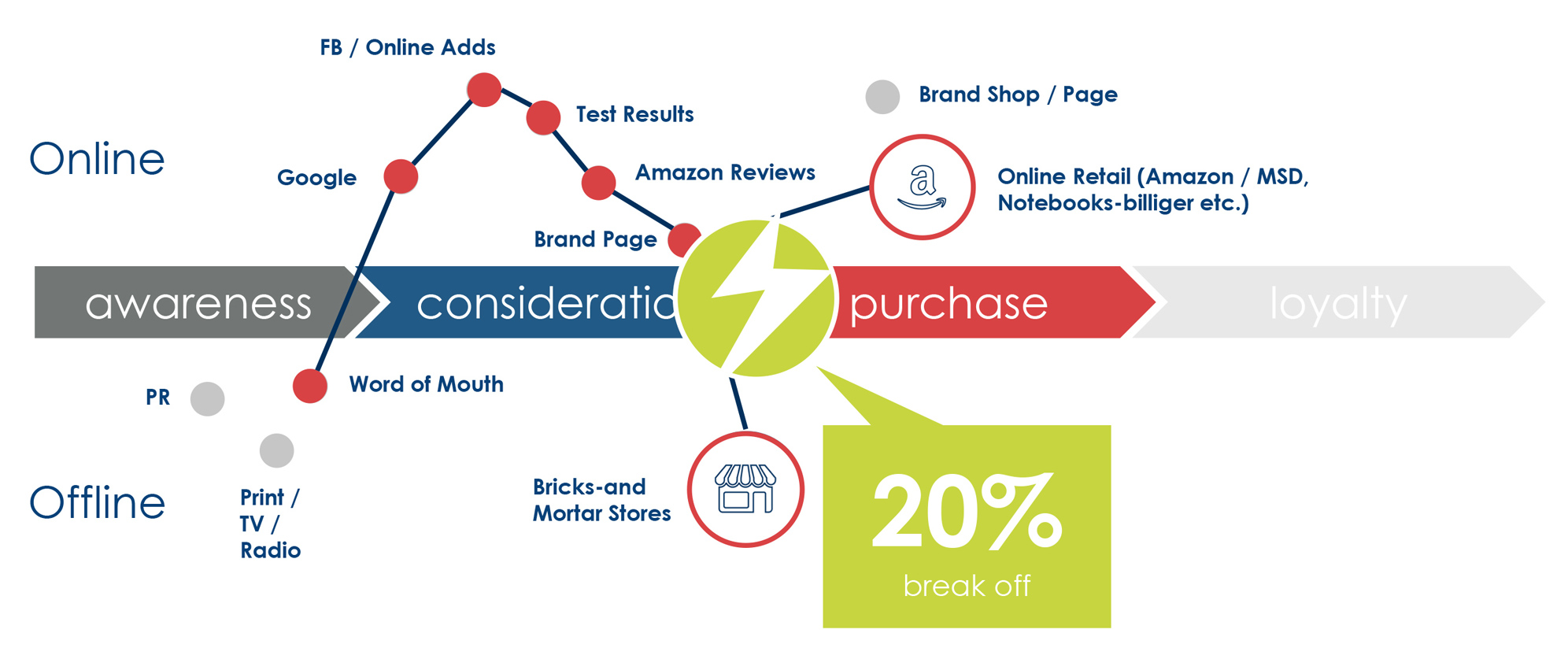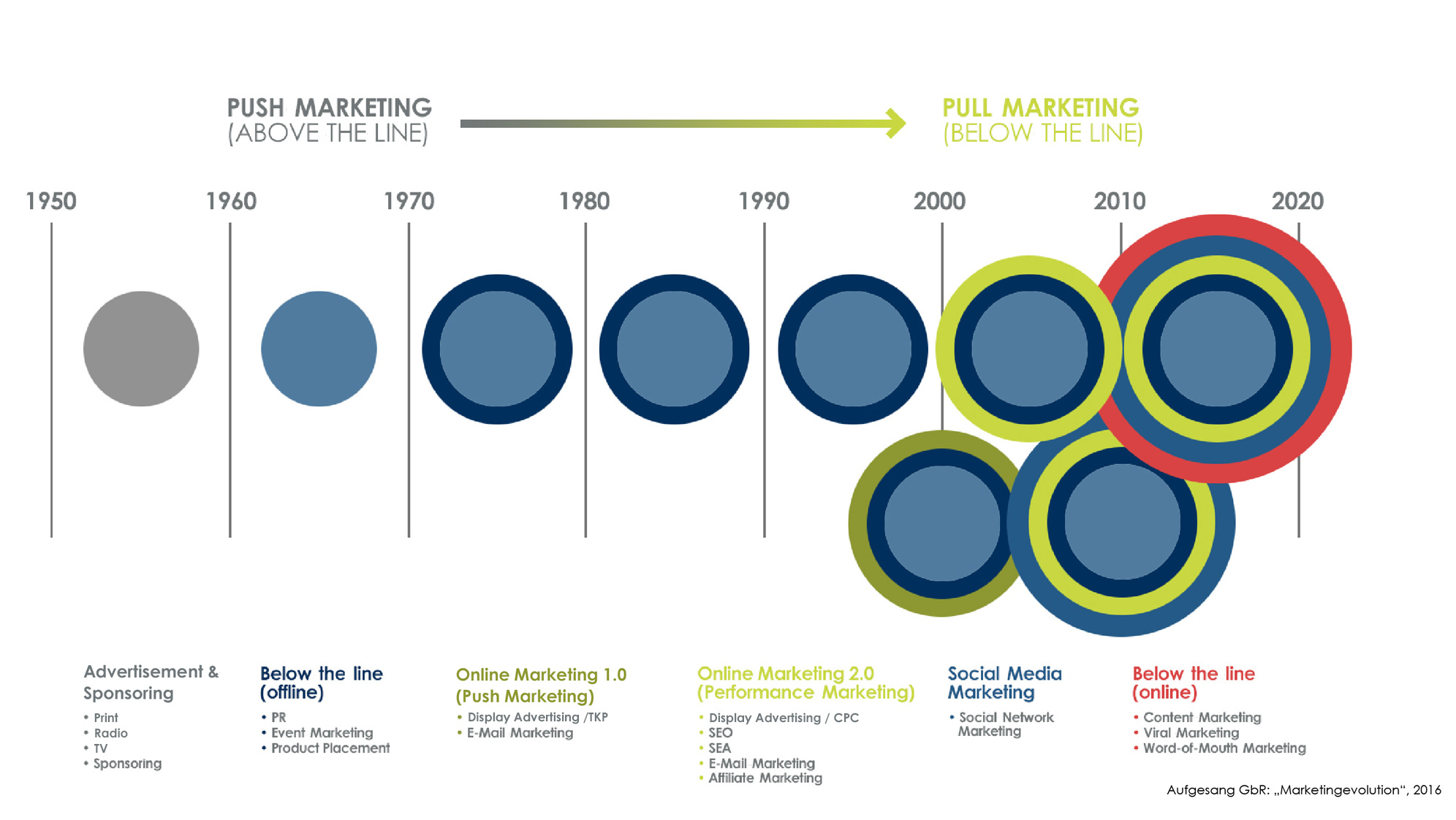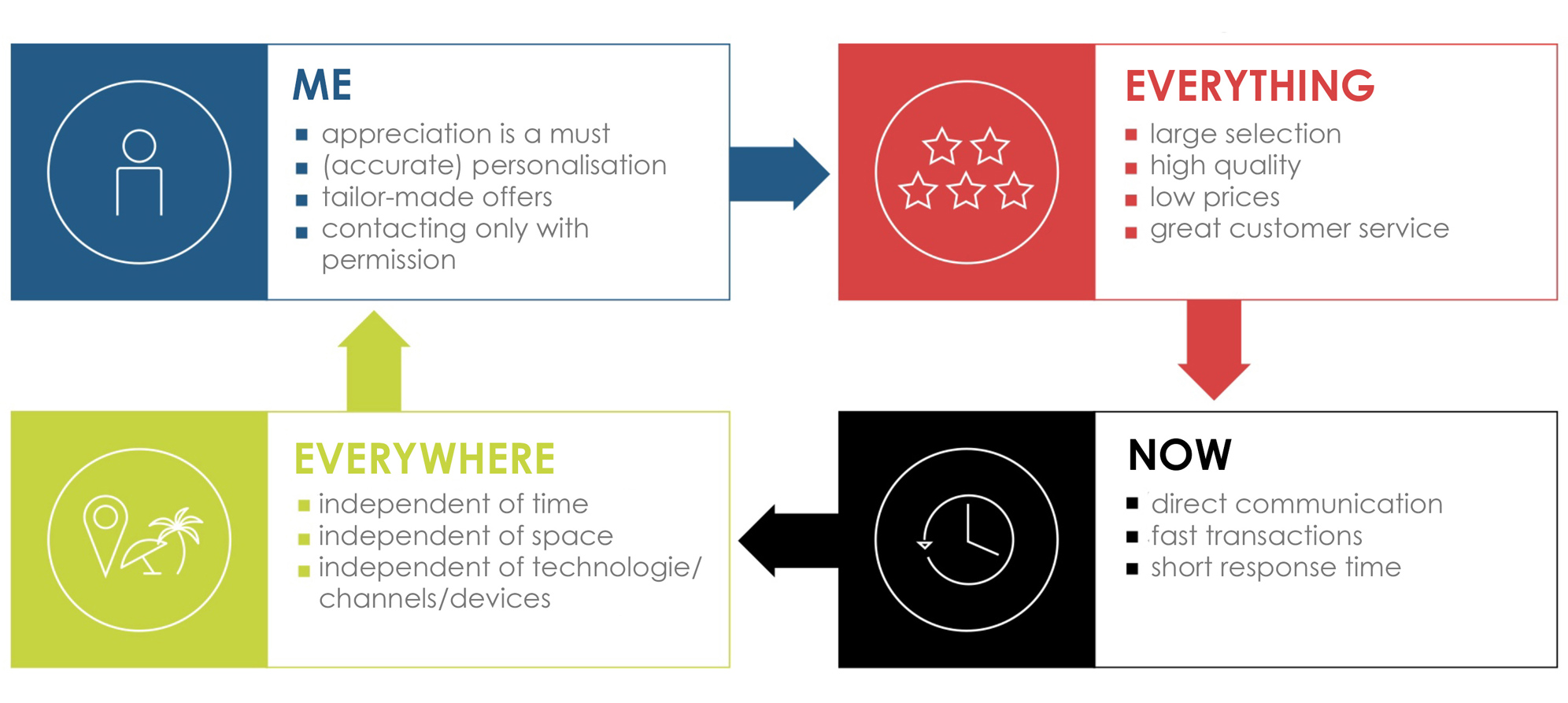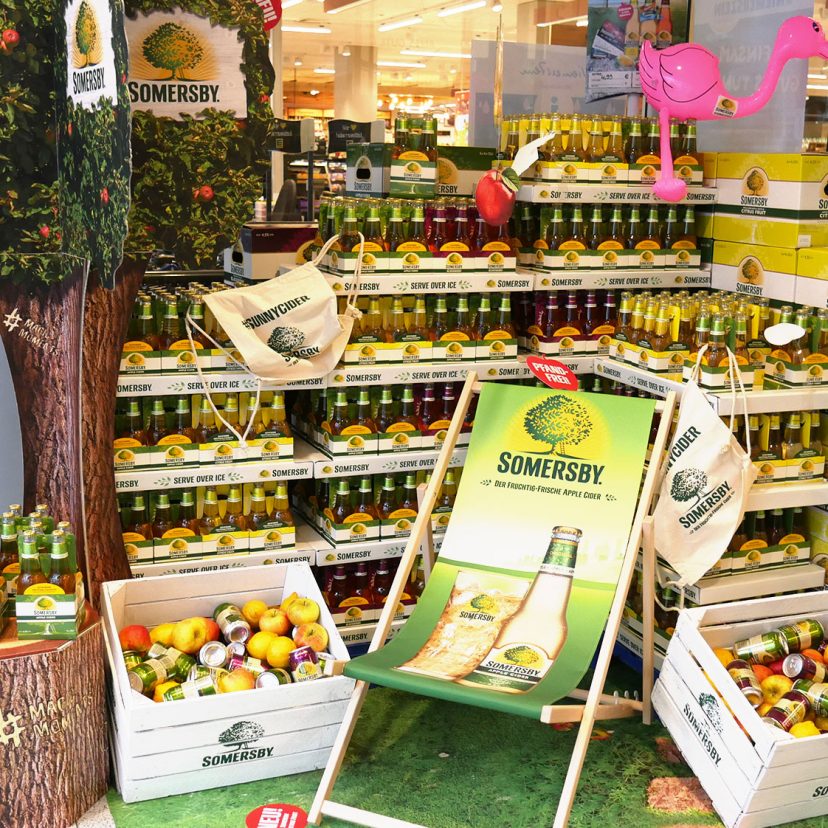Those who aren’t aware of it don’t stand a chance.
We work for manufacturers from a wide range of industries on a daily basis. We are experts for the POS. We use our experience and regular monitoring of developments at the POS to understand the Shopper Journey, to know their influencing factors and to lead each of our customers to success.
What has changed?
The Customer Journey, and also the Shopper Journey, is the path the consumer takes, from the first contact to the final purchase decision, and in the best case, even to a connection and loyalty to the product or company. Our recent shopper study shows that the Shopper Journey is not only unique for every shopper, there are also significant differences in different sectors. In consumer electronics, we have the longest customer journey, because the desire for information before purchase is greater than, for example, in food retail. But it is also extended by the manufacturers and industry with information, service and customer loyalty offers.
The Shopper Journey has changed considerably in recent years and has been expanded thanks to technological developments and changes in the advertising market. Compared to the past, it is by no means linear, but multi-layered and, above all, different for each customer.

Influences on the Shopper Journey
The graphic clearly illustrates that no channel can be viewed individually. A conscious interaction of the channels, the digitalisation, all forms of advertising and the unconditional knowledge of customer needs are necessary in order to manage everything in a target-oriented manner. However, the influencing factors of the Customer Journey also play a major role and determine the future viability of a retailer or manufacturer.
In our Omnishopper study, we identified 4 basic needs in shopper behaviour for the CE, food retail and pharmacy (OTC/free-choice) sectors. They are: Inspiration, security, convenience shopping and price awareness. For each sector, one need always comes first, but it is never the same one.
The 4 consumer expectations
The circumstances have changed and the shopper now has a demand monopoly. Thus, the role of retailers and manufacturers has also changed. Their entire range of products and services must be specifically tailored to the needs of the shopper, only then will they continue to be successful.
Advertising also offers totally new opportunities
While the purchasing process used to be linear, the Customer Journey is now much more comprehensive and branched out. In the past, print, TV and radio advertising were mainly used for range communication. With the Internet and the increasing digitalisation of communication and advertising, a number of online measures were added – from social media to advertisements to influencers. There are now an almost infinite number of ways to reach and accompany the shopper. But a few thoughts should be integrated into the planning and implementation:
- Each form of advertising meets the shopper/customer at a different point of his Shopper Journey.
- In order to achieve the desired effect, the needs of the shopper must be known.
- Not all touchpoints are relevant. But we need to know which touchpoints significantly contribute to the purchase decision and how. We have to focus on these touchpoints in order to pick up the shopper in the best possible way. The following applies:
- Information where the shopper wants it.
- Incentive to buy where it is needed by the shopper.
So, it is a mix of focus, timing and dosage that leads to success. In addition, the objective also determines the selection of marketing measures for the POS. Therefore, the focus should be on sales, customer retention and the shopper’s loyalty. The technological and social changes have contributed to the fact that the advertising market has also changed – from PUSH to PULL marketing including a massive increase in the opportunities to implement it and evaluate it in real time.

How do you master the Customer Journey?
Essentially, there are 4 points:
- The analysis
- Visualise the individual Customer Journeys.
- Identify the influencing factors.
- Define the relevant touchpoints.
- The objective
- Sales, image or customer loyalty?
- Determine priorities
- The customer
- Who is my customer and how can I accompany him on his Customer Journey?
- The measures
- The customer wants the best of both worlds: online and offline.
 We have five recommendations for the implementation:
We have five recommendations for the implementation:
1. Define a fixed budget that supports the process.
2. Think big & create concepts.
3. Conduct a small test, ideally with a retail partner.
4. Learn quickly and use the findings for the next test.
5. Always compare the concepts to the latest trends & innovations.
The most important thing is to remain flexible, because the influences on the Customer Journey and the customers are constantly changing, which means that the measures must be adjusted regularly.
My conclusion
Those who wish to master the Customer Journey need knowledge and a plan for implementation. Only those who are aware of the Customer Journey can use the various touchpoints sensibly. The customer requirements are different for each touchpoint (information, service, purchase), but with the necessary knowledge, we are able to accurately pick up and positively influence the shopper where needed.



